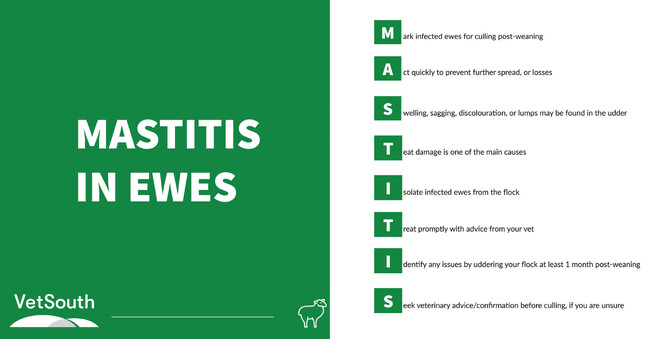You’re a few weeks into lambing and just starting to get on top of your workload, when ewes start dropping their heads, or limping around the paddocks, and those bright, healthy twins they have are getting hangry. Sound familiar?
Post-lambing mastitis in ewes is a common problem that could be costing you dearly.
What exactly is mastitis?
Mastitis is an infection of the udder that causes swelling and inflammation.
If left untreated, there is a risk the ewe will lose her udder and may ultimately die, often leaving behind orphan lambs.
Some mastitis-causing bacteria are resistant to many widely-available antibiotics, rendering a complete ‘cure’ unlikely. In these cases it is possible to save the ewe and also the ‘good side’ of her udder if you catch the infection quickly enough.
Identification
Some things to look out for in the paddock to help identify ewes suffering with a mastitis infection:
- Sitting/lying down more often
- Not eating or chewing her cud
- Her lambs may be hanging around her looking hungry/not being tended to
- Limping on one of her hind legs - this often looks like a ‘Peg-leg’
- Swollen, red, lumpy, or saggy udder (it may initially be red/purple and hot to the touch, but will feel cold and hard once chronic)
- Poor body condition.
Once you have caught the ewe, you can milk the teats to check for any discolouration of milk. Mastitis may only be present in one half of the udder and may produce pink/bloody milk, or sometimes a thick/lumpy substance.
Treatment options
- Strip/milk-out the teats
- Inject with a brown antibiotic
- Inject with an anti-inflammatory
Identifying infected ewes post-weaning
You may miss some cases of mastitis while out doing your rounds, so it is important to investigate the whole flock after weaning to look for any udder damage that has occurred.
We recommend waiting until at least one month after weaning to udder your ewes. This gives you a chance to pick up on any infections that occur post-weaning, and it will be easier to identify problems with the udder once they have dried off.
All ewes that have had mastitis should be marked and culled, as future infections are more likely, along with the existing damage already caused to the udder likely to make subsequent lamb feeding more difficult.
How to reduce infections
To reduce the incidence of mastitis in your ewes, ensure you lamb on paddocks with good grass cover, and avoid wet and muddy areas that can harbour bacteria. Belly crutching your ewes pre-lambing can also help to protect the udder.
Contact your KeyVet for more advice around mastitis treatment, or to get us out to check any potential infections that you identify post-weaning.
- Rachael Buckingham


